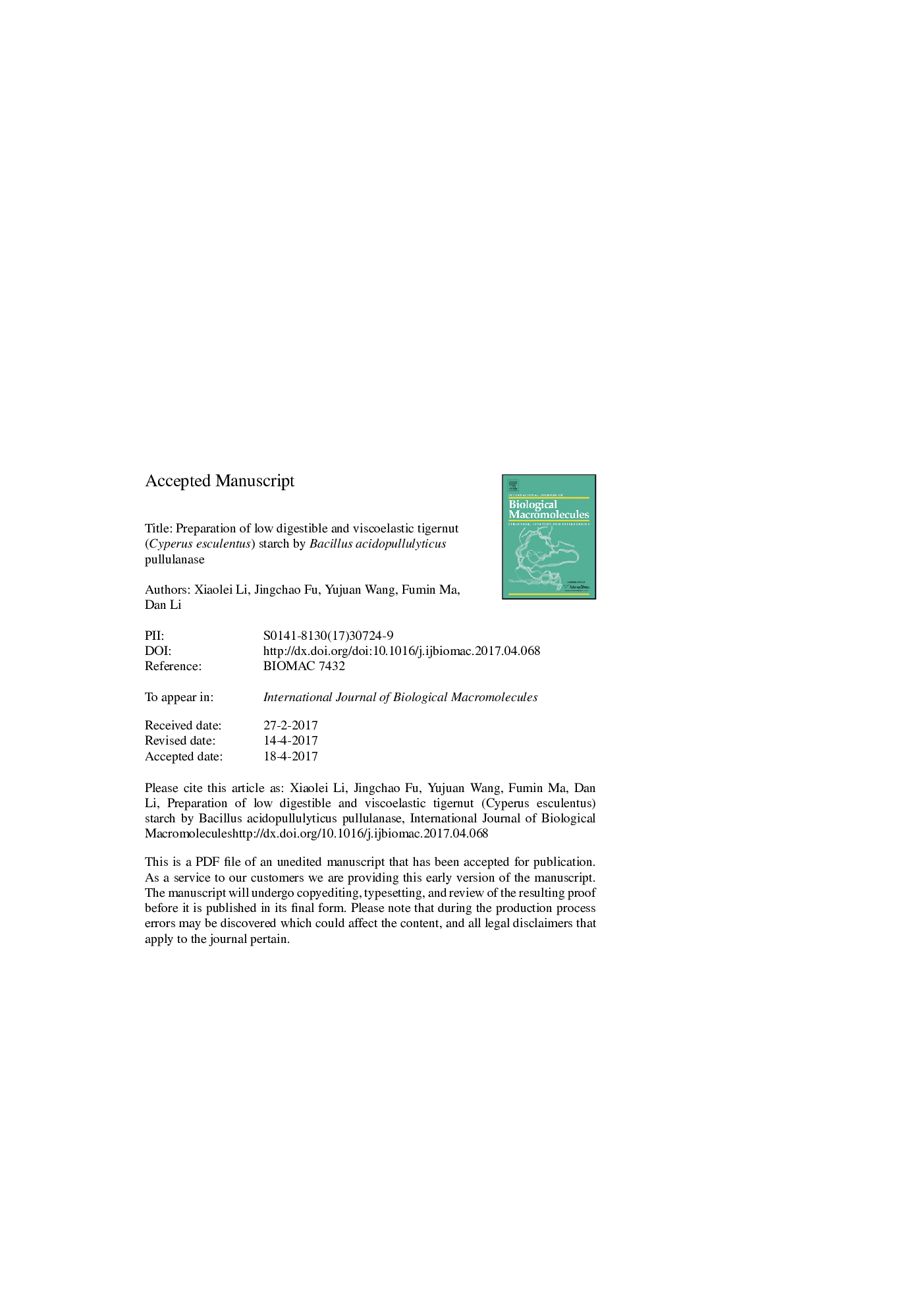| Article ID | Journal | Published Year | Pages | File Type |
|---|---|---|---|---|
| 5511792 | International Journal of Biological Macromolecules | 2017 | 19 Pages |
Abstract
Tigernut starch is an underutilized food resource. In this study, pullulanase (PUL) hydrolysis was used to change its physiochemical properties for different food applications. The content of low digestible fractions, resistant starch and slow digestible starch, in PUL modified tigernut starch significantly increased from 2.03% to 25.08% (PÂ <Â 0.05) using 100Â U/g starch of PUL in the debranching reaction. The paste or dispersion of PUL modified tigernut starch had a significantly decreased viscoelasticity (PÂ <Â 0.05), but the paste still exhibited a typical property of pseudoplasticity. Molecular weight, amylopectin A B2 and B3 chain of PUL modified starch were lower, while amylose content, amylopectin B1 chain were higher than those of natural tigernut starch. The low digestible and viscous tigernut starch is highly valued as a component in some functional foods.
Related Topics
Life Sciences
Biochemistry, Genetics and Molecular Biology
Biochemistry
Authors
Xiaolei Li, Jingchao Fu, Yujuan Wang, Fumin Ma, Dan Li,
